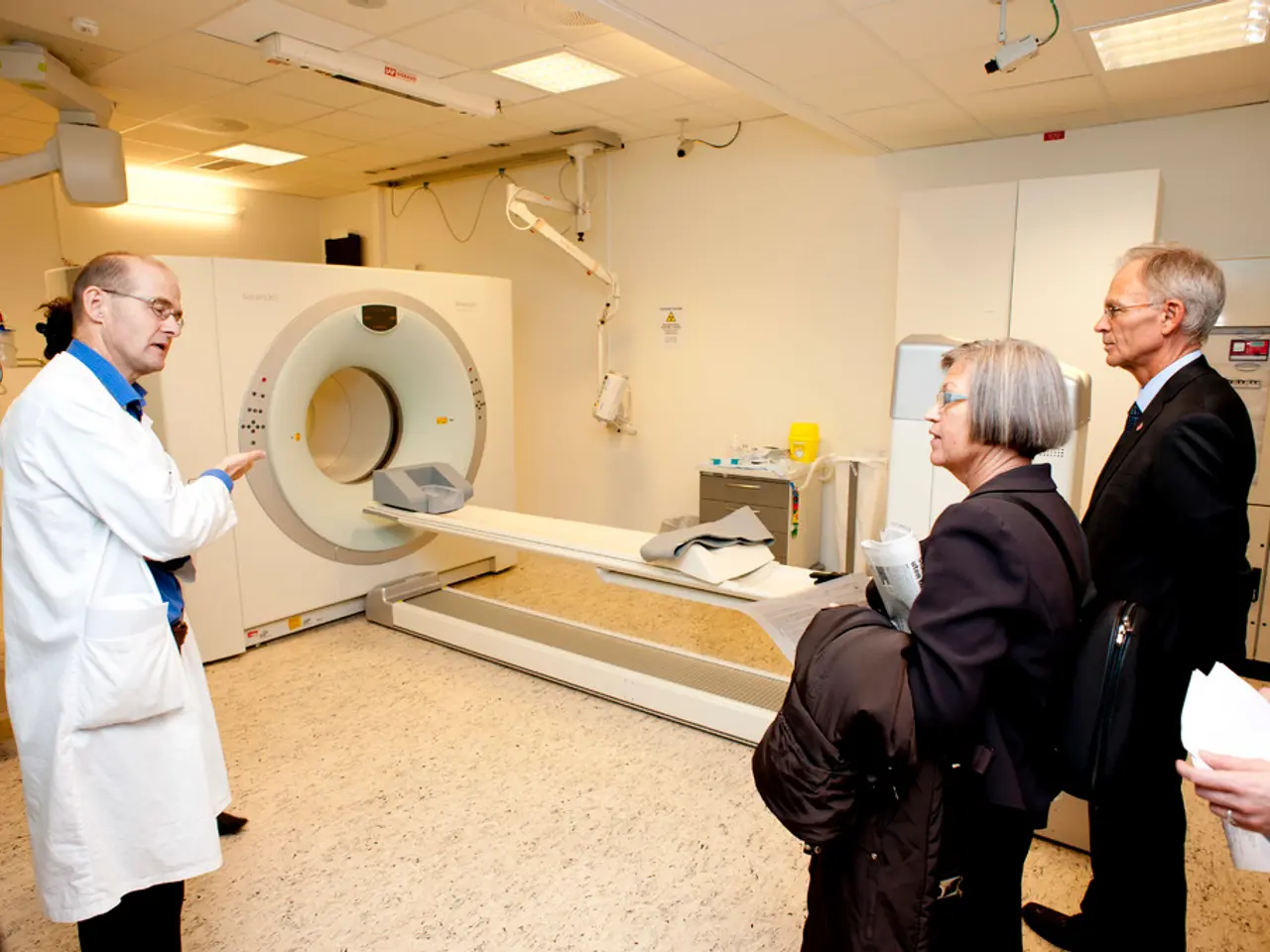"Guide on Becoming a Radiology Technician: Procedures, Education, and Common Questions"
In the ever-evolving field of healthcare, radiologic technologists play a crucial role in diagnosing and treating medical conditions using medical imaging equipment. Here's a step-by-step guide on how to become a certified radiologic technologist in the United States.
## Steps to Certification
1. **Meet Educational Prerequisites** - Complete general education (GE) courses such as biology, anatomy, chemistry, and mathematics. - Enroll in an accredited associate degree program in radiologic technology, or a comparable program at a higher level.
2. **Complete an Accredited Radiologic Technology Program** - Typically two years (after prerequisites), resulting in eligibility for a Certificate of Achievement or an Associate of Science (AS) degree. - Ensure the program is accredited by the Joint Review Committee on Education in Radiologic Technology (JRCERT) or recognized by the American Registry of Radiologic Technologists (ARRT).
3. **Meet ARRT Eligibility Requirements** - Graduate from an ARRT-approved educational program. - Adhere to ARRT standards of ethics, which may include a background check. - As of 2025, you must earn your degree (associate or higher) within three years of finishing your educational program.
4. **Submit ARRT Application** - Provide necessary documentation, including official transcripts and proof of ethics compliance. - Once approved, schedule your ARRT certification exam.
5. **Pass the ARRT Certification Exam** - Covers patient care, imaging procedures, and radiation safety. - Must be taken within 365 days of eligibility notification.
6. **Apply for State Licensure** - Most states require licensure in addition to ARRT certification. - Submit education, certification, and clinical experience documentation to the state licensing board. - Some states may require a separate licensure exam, but many accept ARRT certification as sufficient.
7. **Receive and Maintain Certification and License** - Once approved, you are issued a license to practice, typically valid for a set period (e.g., two years). - Complete ongoing continuing education requirements and adhere to state practice standards to maintain licensure.
## Educational Requirements
- **Minimum Degree:** Associate degree in radiologic technology (or higher). - **Prerequisites:** General education and science courses prior to program entry. - **Clinical Experience:** Hands-on training as part of the accredited program.
## Frequently Asked Questions (FAQs)
**How long does it take to become a radiologic technologist?** - **Associate Degree Program:** Approximately two years after completing prerequisites. - **Total Time:** Typically 2–4 years, depending on prior education and prerequisites.
**What is the ARRT certification process?** - **Graduate from an ARRT-approved program.** - **Meet ethics requirements.** - **Apply and pass the ARRT certification exam.**
**Do I need a separate state license?** - **Yes, most states require licensure in addition to national certification.** Licensure requirements vary by state but often accept ARRT certification as proof of competency.
**Are there ongoing requirements?** - **Yes:** Maintain certification and licensure through continuing education and adherence to professional standards.
**Can I work as a radiologic technologist while in school?** - **No:** Only certified and licensed technologists are permitted to work independently. Clinical rotations during the program provide supervised hands-on experience.
**What happens if I fail the ARRT exam?** - **Retakes:** You may retake the exam after a waiting period. Multiple attempts are allowed within your eligibility window.
## Summary Table
| Step | Requirement | |---------------------------------|--------------------------------------------------| | Educational Prerequisites | GE and science courses | | Accredited Program | Associate degree (or higher) in radiologic tech | | ARRT Certification | Pass ARRT exam, meet ethics and education reqs | | State Licensure | Apply to state board, provide proof, pay fees | | Ongoing Requirements | Continuing education, renewal every 1-2 years |
Becoming a certified radiologic technologist requires a combination of education, clinical training, certification, and licensure, with ongoing professional development required to maintain credentials. With a competitive salary and positive job prospects, a career as a radiologic technologist offers exciting opportunities in the healthcare field.
In the course of pursuing a career as a radiologic technologist, one should first meet educational prerequisites, which involve completing general education and science courses such as biology, anatomy, chemistry, and mathematics. Next, they should enroll in an accredited associate degree program in radiologic technology, with the program being accredited by either the Joint Review Committee on Education in Radiologic Technology (JRCERT) or recognized by the American Registry of Radiologic Technologists (ARRT).
To become eligible for ARRT certification exam, graduates should meet its requirements, which include graduating from an ARRT-approved educational program and adhering to ARRT standards of ethics, potentially involving a background check. The ARRT certification exam assesses areas like patient care, imaging procedures, and radiation safety, and should be taken within 365 days of eligibility notification.
Most states also require licensure in addition to ARRT certification, requiring education, certification, and clinical experience documentation to be submitted to the state licensing board. Some states may have separate licensure exams, but many accept ARRT certification as sufficient.
Maintaining one's certification and license involves completing ongoing continuing education requirements and adhering to state practice standards. A career as a radiologic technologist offers exciting opportunities in the healthcare field, combining technical knowledge in health and wellness with opportunities for personal growth and financial stability in the business sector, particularly in education-and-self-development and careers related to finance and business.




